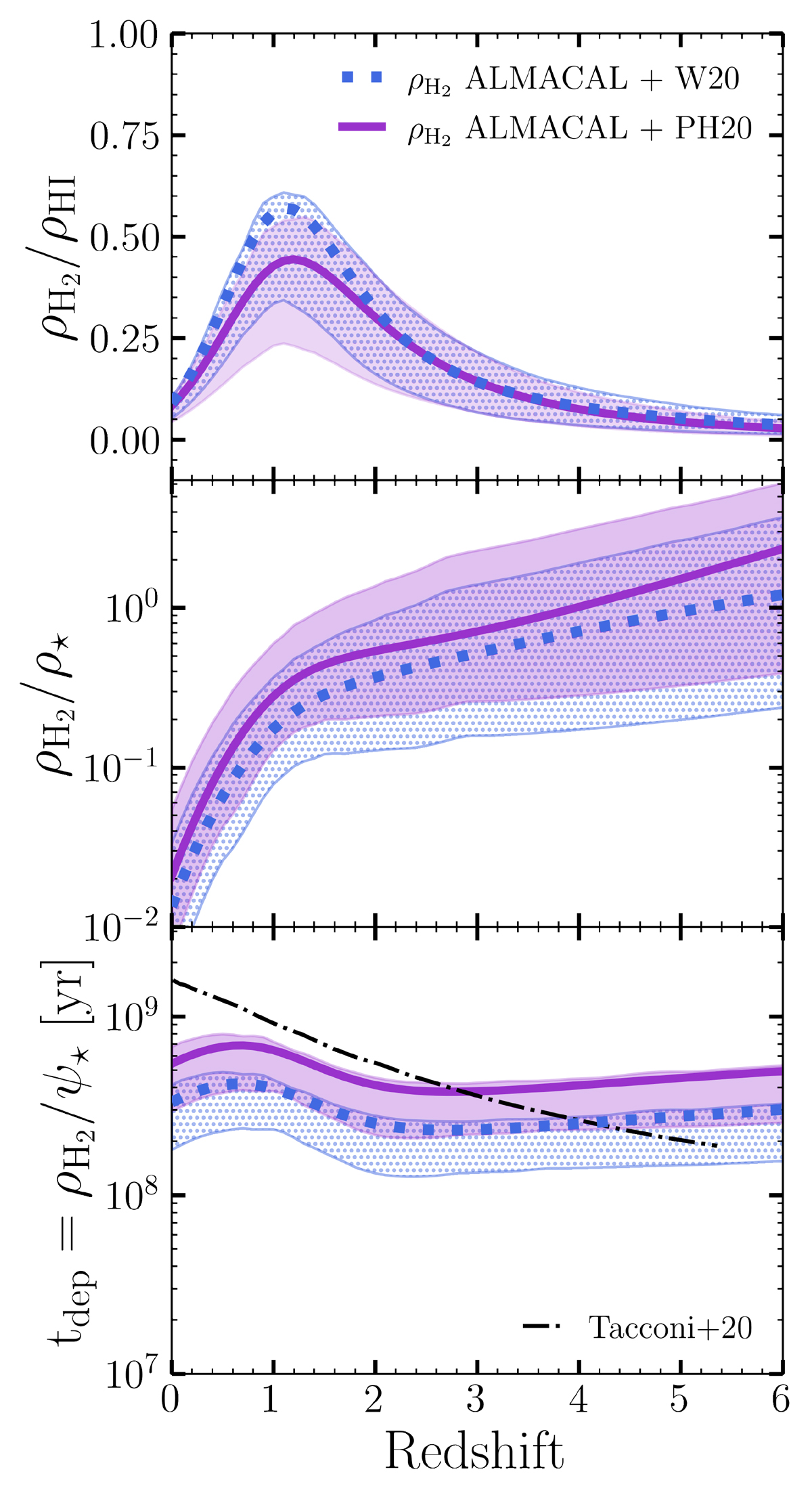Fig. 12.

Download original image
Redshift evolution of baryonic component in the Universe. Top: ratio of cosmic molecular-to-atomic gas density as a function of redshift. Middle: ratio of molecular gas-to-stellar mass density as a function of redshift. Bottom: cosmic gas depletion timescale, is defined as the density of molecular gas over the cosmic star formation rate density. We include the molecular gas depletion times commonly derived for individual galaxies as the ratio MH2/SFR, as is reported in Tacconi et al. (2020). We use the fit of ρ⋆ presented by Madau & Dickinson (2014). We used the values of ρHI and ψ⋆ fitted in the compilation done by Péroux & Howk (2020) in dotted blue and Walter et al. (2020) in purple. For the star formation rate density and stellar mass function, the former assumes a Chabrier IMF (Chabrier 2003) and a return fraction R = 0.41, while the latter assumes a Salpeter IMF (Salpeter 1955) and R = 0.27. The ρH2 corresponds to the fit presented in Sect. 5.2, which includes the results from previous surveys that have measured CO along with ALMACAL.
Current usage metrics show cumulative count of Article Views (full-text article views including HTML views, PDF and ePub downloads, according to the available data) and Abstracts Views on Vision4Press platform.
Data correspond to usage on the plateform after 2015. The current usage metrics is available 48-96 hours after online publication and is updated daily on week days.
Initial download of the metrics may take a while.


